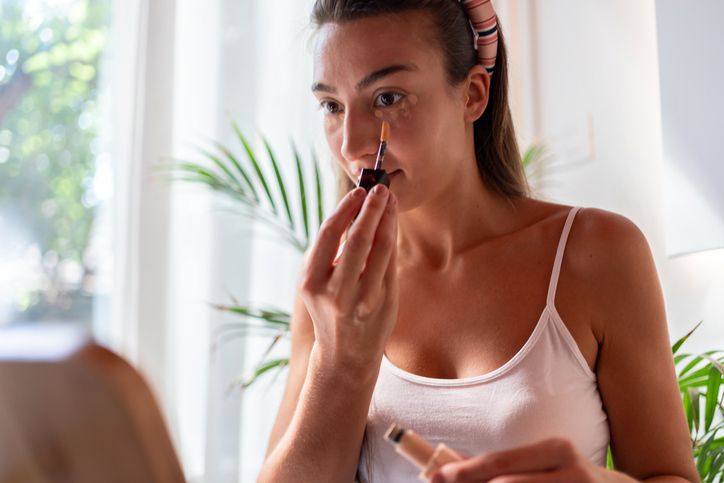- Home
- Trend
- Weight Loss Strategies
- Acne Tips
- Hair Health Information
- Blemish Removal Tips
- Acne Scar Removal Tips
- Muscle Building Techniques
- Intimate Care Tips
- Postpartum Intimate Care
- Eye Bags Wiki
- Tips for Face Slimming
- Secret of Permanent Hair Removal
- Breast Enlargement Tips
- Cure to Snoring
- Marionette Lines
- Skin-Tightening Secrets

免費體驗
S6 Body Sculpting Treatment
1 Minute Self-Registration
Date should not be before minimal date
Tempted by famous Hong Kong cuisines such as dim sum and roast goose, while also wanting to shed some pounds? Hong Kong offers a diverse range of food options, including Italian, Korean, Thai, Lebanese, vegan, vegetarian dishes, and numerous healthy restaurants. It’s a challenging dichotomy, but one that can be conquered. With a little planning and creativity, you’ll be able to enjoy the flavors of this culinary hub without sacrificing your health objectives - but first, let’s explore the essential strategies for healthy eating in this city.
1
Macronutrient Balance for a Balanced Diet for Weight Loss

Role of proteins, fats, and carbohydrates in a healthy diet
Ideal macronutrient ratios
2
Women in Different Age Groups: Nutritional needs and weight management tips

Young to Middle Aged Women
Post-menopausal to elderly women
3
Practical Tips for Having a Healthy Diet in Hong Kong

Shopping for Fresh, Seasonal Ingredients
Tips for selecting high-quality, nutrient-dense foods
Adapting traditional dishes for healthy meals
Healthier cooking methods
How to Read Nutrition Information Labels
Avoiding hidden sugars and unhealthy additives
Tips for navigating restaurant menus
4
S6 Body Sculpting Treatment: Quick and Healthy Fat Reduction in Hong Kong!


免費體驗
S6 Body Sculpting Treatment
1 Minute Self-Registration
Date should not be before minimal date
5
Common Dietary Pitfalls and How to Avoid Them

Inadequate Fruit and Vegetable Intake
Consumption of High Salt Content Foods
Iodine Deficiency Status
6
Overcoming Challenges to Healthy Eating

Busy Lifestyles and Time Constraints
Cost of Healthy Foods
The Temptation of Convenient Unhealthy Foods
Understanding Portion Control
Healthier Eating Habits Such as Mindful Eating

免費體驗
S6 Body Sculpting Treatment
1 Minute Self-Registration
Date should not be before minimal date
FAQ

How can I reduce salt intake in my diet?
To reduce salt consumption, choose fresh foods over processed foods and limit adding extra salt during cooking. Use low-sodium soy sauce and condiments, and enhance taste with herbs, spices, and citrus juices to promote physical health and prevent heart disease.
What are some nutritious food options from traditional Cantonese cuisine?
Healthy traditional Cantonese dishes include steamed seafoods, congee with lean protein, and stir-fried vegetables with minimal oil. Select cuisines that are rich in vegetables and lean proteins, and avoid those high in salt or with excessive sauces to promote overall well being.
What are some healthy choices when dining out in Hong Kong restaurants?
When eating out, select traditional cuisines with lean meat like steamed fish or chicken. Prefer cooking methods such as grilling, steaming, or stir-frying. Ask for sauces on the side and choose vegetable-based cuisines to ensure a healthy diet and control your daily intake. Additionally, Hong Kong offers a variety of healthy restaurants that provide nutritious meal options.
How do I read nutrition labels to make healthy choices?
Check the serving size and nutrients on nutrition labels. Aim for low saturated fat, cholesterol, and salt. Look for high fiber content and avoid ingredients like high fructose corn syrup to ensure healthy eating and maintain good health.
What is an example of a healthy breakfast?
Opt for a nutritious food breakfast with whole grains, lean proteins, and fruits. Examples include oatmeal with fruits, whole grain toast with avocado and eggs, or a smoothie with spinach, banana, and almond milk to start your day with sustained energy and overall well being.








